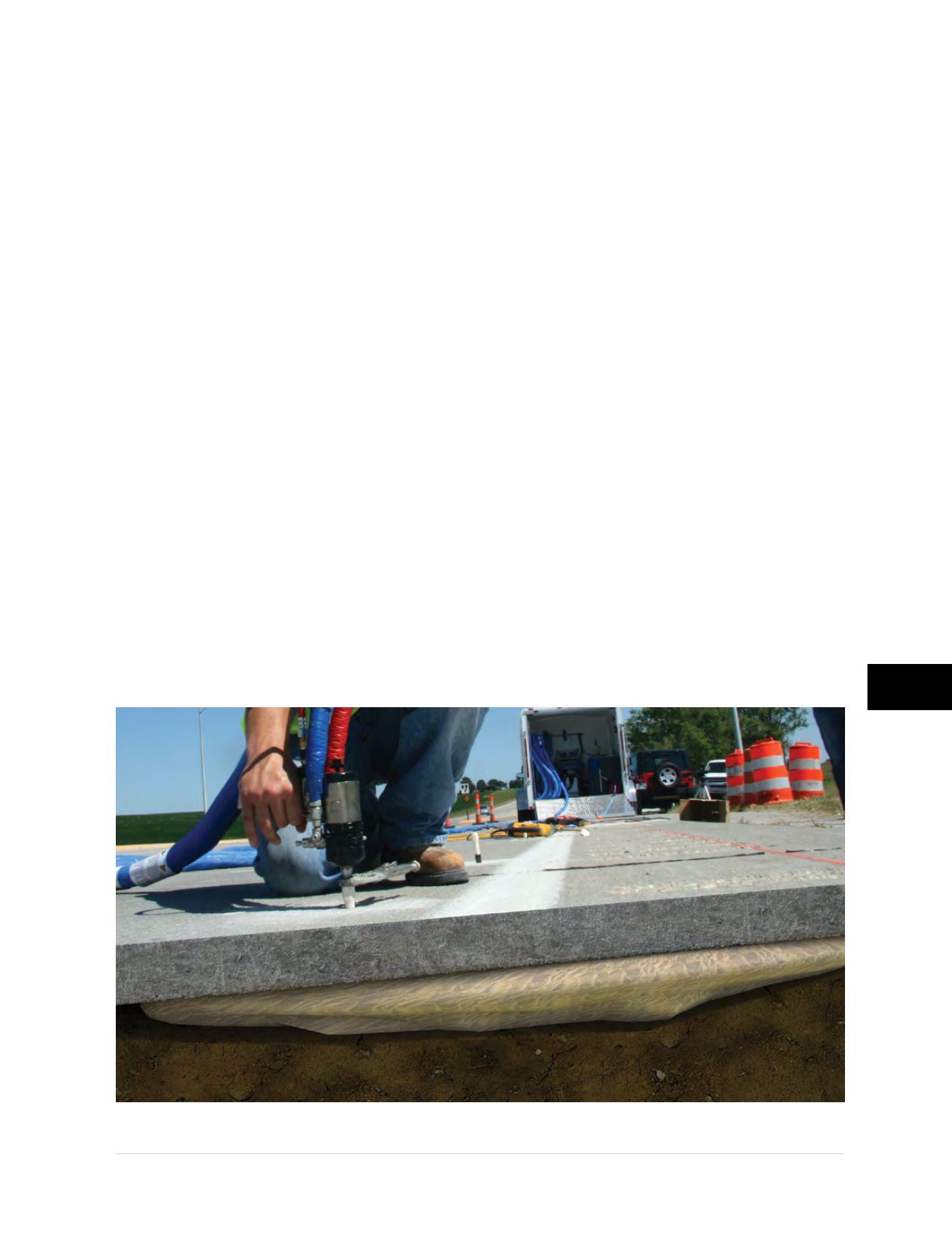
© 2014 Foundation Supportworks
®
,
Inc.
All Rights Reserved
p 333
Chapter 5
PolyLEVEL
®
Polyurethane Foam and Resin
CHAPTER 5
POLYLEVEL
®
POLYURETHANE FOAM AND RESIN
CHAPTER 5
POLYLEVEL
®
POLYURETHANE FOAM AND RESIN
5.1 Summary Description
The PolyLEVEL product line consists of
polyurethane foams and resins for use in a
wide range of geotechnical and structural
applications. The more commonly used
products are two-part urethanes that expand
into rigid foam to fill voids, stabilize concrete,
and lift concrete. The product is injected at the
interface between the concrete slab and the
subgrade soils
(Figure 5.1.a)
. Variations in the
formulas of the two-part foams allow for uses in
even more specific applications, as mentioned in
Section 5.2. Outside of the general offerings of
two-part products, single-part, non-expanding
PolyLEVEL resin is injected deep into loose
soil as a binder material, thereby stabilizing the
soil from further consolidation/densification, or
allowing vertical excavations to be made.
Polyurethane is not a new material. The
chemistry of polyurethanes was discovered and
patented in 1937 and has been used extensively
for three quarters of a century in a variety of
products and materials. Polyurethanes are
best known to the public in the form of flexible
foams; i.e., upholstery cushions, mattresses,
caulking, weatherstripping, vehicle door and
dash moldings, tires for toddler bikes and
wheelborrows, etc. Spray foam insulation
and foam filler within shells of watercraft are
examples most similar to the line of two-part
PolyLEVEL products.
Polyurethane foam is created by the reaction
of a diisocyanate (the “A” or “Iso” side) with
a polyol (the “R” or “Resin” side) to form a
urethane linkage. Diisocynates are organic
compounds that are specifically manufactured
to react with polyols. The A side varies little
between polyurethanes of similar product lines
or use groups. Polyols are simply alcohols with
multiple hydroxyl groups. The polyols and other
additives within the R side may vary significantly
between products to control characteristics
such as color, density and speed of reaction.
Figure 5.1.a
Rendering of PolyLEVEL foam
injection beneath concrete pavement


